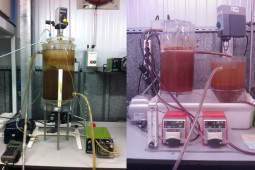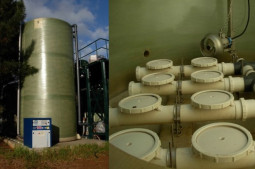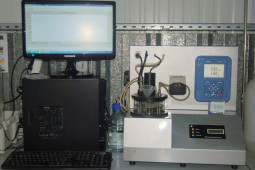Biological Degradation
As globalization continues and the earth’s natural processes transform local problems into international issues, few societies are being left untouched by major environmental problems. Water, our most precious natural resource, is being threatened by a multitude of contaminants, resulting in an unprecedented water contamination crisis with local and national implications. Our research has been focused in the development of a new strategy for the treatment of toxic or recalcitrant pollutants from industrial wastewaters, through wastewater biodegradability enhancement, being possible to couple chemical oxidation processes with conventional biological treatments, in order to meet discharge limits and water reuse, minimizing chemicals consumption and energy. In fact, this combination proved also to be successful in decreasing treatment time, plant size and, consequently, increasing the overall process efficiency. The research group has already demonstrated the possible technical viability of coupling chemical and biological processes for the treatment of cork, textile, canned fish and winery wastewaters, as well as leachates from sanitary landfills in a pilot plant. Based in the excellent results obtained, pre-industrial plant for raw leachates treatment was constructed and installed in a sanitary landfill located in the north of Portugal, combining an aerobic/anoxic biological system (3.5 m3 capacity) with a solar photo-Fenton oxidation process with 39.5 m2 of CPCs.




T.F.C.V. Silva, E. Vieira, A.R. Lopes, O.C. Nunes, A. Fonseca, I. Saraiva, R.A.R. Boaventura, V.J.P. Vilar. How the performance of a biological pre-oxidation step can affect a downstream photo-Fenton process on the remediation of mature landfill leachates: Assessment of kinetic parameters and characterization of the bacterial communities. Separation and Purification Technology, 175, 274-286, 2017
F.C. Moreira, R.A.R. Boaventura, E. Brillas, V.J.P. Vilar. Remediation of a winery wastewater combining aerobic biological oxidation and electrochemical advanced oxidation processes. Water Research, 75, 95-108, 2015
R.O. Cristóvão, C. Gonçalves, C.M. Botelho, R.J.E. Martins, J.M. Loureiro, R.A.R. Boaventura. Fish canning wastewater treatment by activated sludge: Application of factorial design optimization. Biological treatment by activated sludge of fish canning wastewater. Water Resources and Industry, 10, 29-38, 2015
D.R. Manenti, A.N. Módenes, P.A. Soares, F.R. Espinoza-Quiñones, R.A.R. Boaventura, R. Bergamasco, V.J.P. Vilar. Assessment of a multistage system based on electrocoagulation, solar photo-Fenton and biological oxidation processes for real textile wastewater treatment. Chemical Engineering Journal, 252, 120-130, 2014
T.F.C.V. Silva, M.E.F. Silva, A.C. Cunha-Queda, A. Fonseca, I. Saraiva, M.A. Sousa, C. Gonçalves, M.F. Alpendurada, R.A.R. Boaventura, V.J.P. Vilar. Multistage treatment system for raw leachate fromsanitary landfill combining biological nitrification-denitrification/solar photoFenton/biological processes, at a scale close to industrial - Biodegradability enhancement and evolution profile of trace poll. Water Research, 47, 6167-6186, 2013




